What could be more beautiful than fragrant tea with mint cold winter night? You will get even greater pleasure if you grow mint yourself. The fragrant plant is known since ancient times. It received his name in honor of the Greek nymphs of the cops, in which Aid himself was loved. With the cultivation of mint in the open soil you will not have almost no hassle. From this article you will learn how to grow mint, what mint looks like, what to do with mint in the fall.
Mint. Plant Description
Mint - a plant that has used the honorable time during the time of ancient Rome. It was then that this aromatic plant rubbed the furniture in the house, mint water sprayed rooms for creating fragrant fragrance. In ancient Egypt, mint even put straight in the tomb of the pharaohs. In Europe, the mint was most often used as a spice, supplements to sauces. In America, this plant could often be found in vegetable salads, refreshing cocktails. You can meet the folk names of mint - "Perekop", "Dragolyub". How does this popular plant look like? Among the main features of the structure of mint can be noted as follows:
- mint - a plant that belongs to the family of casnotkov;
- the countries of the Mediterranean and Central Asia are considered historical homeland;
- stem mint straight, quadruple, hollow inside. The entire surface of the stem is covered with small "guns";
- the root mint system is represented by a horizontally directed rhizome, which is prone to abundant branch;
- mint can achieve a maximum height of 1 meter;
- mint leaves have a beautiful classic form - the heart-shaped at the base and pointed in the top. Leaflets "sit" on stems on small stiffs;
- mint leaves can reach a length of 5 cm, and their width usually does not exceed 2 cm;
- one of the features of mint leaves is their coloring. Their upper side is slightly more dark than the lower;
- the period of blossoms of mint lasts almost throughout the summer. The oblong inflorescences in the form of turrets consist of the smallest lilac flowers of mint;
- few people know, but mint has a fruit - 4 nuts that can be found quite rarely.
For which you can use mint grown on the plot
Therapeutic properties of mint.
Despite the fact that mint is a very common plant, which is growing even with weeds, it can have valuable types of therapeutic effects on the human body. Mint can often be found as the main component in the recipes of traditional medicine from a wide variety. Mint can help in the following cases:
- mint is an excellent natural diuretic. You can make yourself a fragrant mint tea if you ate many salty and acute food on the eve of the evening. The healing drink will prevent the appearance of eats;
- regular use of mints in food can have a choleretic effect;
- mint has a beneficial effect on the human nervous system. And this is perhaps the most well-known useful property of mint. If you suffer from constant emotional overloads, stress, from insomnia, then pay attention to drinks with mint content. It may be tea, decoction, ordinary water with the addition of mint;
- the peppermint is valued by its antibacterial effect. It can be found consisting of anti-inflammatory creams, ointments;
- mint is useful to take and during the ORVI epidemic. This plant strengthens the protective forces of the body. If you are already sick, the mint will have an painful effect;
- drinks made of mint make a wet that is not as thick, help her easier to clench her, which makes it a valuable assistant in the treatment of cough;
- regular use of mints in food can have a positive effect on the operation of the gastrointestinal tract;
- mint contains menthol in its composition, which has a positive effect on the treatment of diseases such as radiculitis, vessel diseases, vessels;
- mint - natural remedy, which has proven perfectly in the treatment of various "female" diseases. Mint helps to normalize the menstrual cycle, balance the hormonal background, improve the condition during the climax. Mint contains vegetable "female" hormones, which can save women from such a problem as intensive hair growth on the face and in other parts of the body;
- drinks with mint - natural anti-pyrethics. They will help to remove unpleasant symptoms of colds, lower body temperature;
- mint is an old and proven to get rid of nausea. Someone is enough to simply breathe the smell of mint to get rid of the unpleasant feeling;
- mint tea and decoctions are recommended for people who suffer from diseases of the cardiovascular system.
The aroma of mint is able to simply raise the mood, even get rid of the headache, an attack of migraine. Now you understand how important it is to have such a valuable plant in its plot. Each will find a way to use mint.
How to apply mint in cooking
If you put me mint in your site, you can not only use it therapeutic properties, but also make it a permanent assistant in your kitchen. With the help of mint, you can create a spicy note in meat dishes, gravy, sauces, salads. Consider the most frequent ways of applying mint in cooking:
- you can cook tea from mint. Just pour 1 glass of boiling water 1 tsp crotched dried mint leaves. Mint can be added to already ready-made black or green tea. In the hot season, you will surprise your close-up cooling lemonade from mint, lemon with ice cubes. Add mint in cold drinks in advance so that the plant to manage to give their essential oils;
- if you like to cook sweet pastries, a variety of desserts, then fresh mint in the garden will definitely not hurt, fragrant and beautiful mint leaves can be a spectacular decor for a cake, summer cake. The hostesses often use mint essences to impart a fragrance with sweet dishes;
- if you dry the leaves of mint, grind them, then you will get a wonderful seasoning for your dishes. Mint emphasizes the taste of meat dishes, vegetable or fruit salads, sauces, gravy. Try not to remake such a natural seasoning, as it can be patched when re-equipment;
- experienced hostesses often use mint to give a special taste to vinegar or vegetable oil. It is enough just to throw the sprig of mint right into the bottle and let it be laid by oil or vinegar.
Mint harm and contraindications
- Since mint is a "female" plant that contains vegetable female hormones, it can harm male health by reducing the testosterone level.
- People suffering from permanent heartburn should be careful with the use of mint tea. Such a drink can only provoke the appearance of bizgl attacks and exacerbate them.
- There are information that mint is undesirable to eating pregnant women. Especially if they wear a boy.
- Limit itself in the use of mint tea or completely refuse him to be able to people who suffer from hypotension. The drink has a relaxing effect on the nervous system, reduces the pressure that these people are contraindicated.
- Mint tea can cause an allergic reaction. This happens very rarely. If you still discovered some deterioration in the well-being after eating such a drink, then exclude it from your diet.
- Mint is also contraindicated to people who have individual imperceptibility of menthol.
- Mint, like any medicinal plant in self-use, is contraindicated to children up to 5-6 years.
You must understand that even though mint and has such an impressive list of medicinal properties, hope to cure only any chronic or acute disease is not worth it. Neglect the integrated treatment that the doctor prescribed you is not needed.
Mint varieties
There are a large number of mint species and smaller subspecies, each of which is represented by different varieties. The most popular subspecies of mint are:
- mint garden;
- mint curly;
- mint long-oil;
- apple mint;
- lemon Mint (Melissa Lemon);
- mint field;
- mint fragrant;
- peppermint.
The most common view of mint is pepper mint. An incredible amount of hybrid varieties was derived, each of which has excellent characteristics. It is mint that the peppers are grown on an industrial scale with the purpose of selling it. Among the varieties of mint peppers, such varieties can be noted as "Prilukskaya 6", "Riddle", "Charm", "Ukrainian List", "Dosage 4" and others.
Mint. Photo
Growing mint in open soil
Stage 1. Choose a place to land mint
In order for the mint to reveal its qualities as much as possible, the intensive fragrance acquired, seriously approach the selection of places for planting this plant. Try to take into account the following recommendations:
- mint has a tendency to a very rapid growing. Her rhizome is like a web excavation increasingly more and more space. Over time, the mint can file the place of growth of other decorative plants, turning into a kind of weed. To avoid this, experienced gardeners advise to limit the zone for the growth of mint, stuck slate slate in the ground around the perimeter. You can also plant mint in pots, containers and burn them into the ground, leaving several centimeters of drawers above the ground surface;
- ideal precursors for mint are bean plants and any root, melon, buckwheat;
- when choosing a place to land mint worth considering the future neighbors of this plant. If you put this plant near fruit shrubs, decorative colors that require periodic processing by pesticides, then such mint can not be eaten. Or satisfy this plant away from such neighbors, or sit next to those plants that do not require such treatment;
- mint prefers to grow at sunny plot. But the meal heat is still harmful to this plant. You can choose a half-walled place protected from drafts;
- mint will feel great on the plot on which manure has been made to feed other predecessor plants;
- choose a plot with light, loose, fertile soil for landing mint. Mint loves moisturized soil, but the oversupply of moisture is not too much useful for her;
- not the best neighbors for mint will be cucumber, beets or cabbage. Such a neighborhood can bring the mint of the disease, spoil its appearance;
- if your plot is too lime soil, then prepare for the fact that the mint will not be so fragrant, which it could be;
- avoid landing mint on areas with sour or wetland soil.
Stage 2. Choose time for landing mint
Dates of landing mint depends on the method of reproduction. The plant is a frost-resistant perennial and it is possible to plant it both in spring and autumn or in summer.
- Mint planting in spring. If you decide to plant mint in the spring with the help of seeds, then it is necessary to do the early spring to enable the plant to root well before the onset of autumn frosts. If you plant mint seedlings in the spring, then the optimal spring month of planting will be a month of ripening of the planting material.
- Landing mint autumn. At the autumn time, mint is put on mostly with cuttings. The north of your region, the earlier it must end the landing of mint so that the plant may be rooted before in winter. Under late landing, mint should take care of the protection of the plant. It is necessary to make a thick layer of mulch. If you breed mint by dividing a bush, then you can do it at any time.
Stage 3. Select the planting material of mint
If you have already decided on the landing site and chose an approximate time, then it is time to start the selection of landing material. The planting material of mint can be represented by seeds or seedlings.
- How to choose mint seeds. Currently, it does not represent absolutely no difficulty to acquire seeds of one or another plant. This also applies to mint. You may argue that buying seeds is not necessary, because you can simply collect them manually. Of course, you can prepare seeds and independently. But this painstaking process may not always be crowned with success. Most of the varieties of mint are hybrids. If you plant the seeds collected from the hybrid, then the plant will grow at all like a parent plant. Better buy seeds in specialized stores. Pay attention to the shelf life.
- How to choose seedlings of mint. Mint seedlings can be purchased on farmers markets, a gardener store, etc. Pay attention to the appearance of seedlings. Mint should not be sluggish, with dried leaves.
If you still want to buy mint seating with the least financial costs, then you can simply contact your neighbor who has a similar plant. It will be necessary to simply cut the process, put it for a while in water, wait for the appearance of white roots and plant it into the ground.
Stage 4. Preparing a plot to landing mint
- To begin with, take measures to limit the growth of mint to avoid its "sprawling" throughout the plot. Just stick around the perimeter of the slate piece of slate to a depth of about 20-30 cm.
- Carefully dig a plot to a depth of 20 cm.
- For each 1 sq. M. It is desirable to make 3 kg. This will make the place of landing as attractive as possible for mint.
- If the groundwater is in your area fit very close to the surface, the landing site of mint needs to be made higher. This plant does not like an oversupply of moisture from the root system.
Stage 5. Landing Mint
In order to plant mint in open ground, you need to make small grooves in a depth of about 5 cm.
- The minimum distance between the rows is 40-50 cm.
- The minimum distance between the plants in the row is 30-50 cm.
Plush seeds with soil, slightly compact it and pour it.
Mint. Reproduction
Method number 1. Mint reproduction by seeds
The reproduction of mint using seeds is a time-consuming and troublesome process. Remember that this method is not suitable for growing hybrid varieties. Mint seeds are distinguished by a small size, it is hard to sow them. In order for shooters to appear as quickly as possible, it is necessary to maintain the air temperature of about 20-25 degrees, maintain the moisture of the soil, to air the landing so that the seeds are not prefinsed. This concerns the cultivation of mint in a seed method at home to obtain seedlings. If you sew the seeds immediately in open ground, then buy several seed bags. Many of them may simply not climb.
Method number 2. Vegetative method of reproduction of mint
A vegetative method of reproduction of mint includes:
- mint reproduction with stalks. From the stem of an adult mint plant, you need to cut off the cutlets with a length of about 10 cm and put into the water. The cutlets should receive enough sunlight, be warm, and after a while you will see white roots. After that, the cuttings are ready for landing into an open ground. Some gardeners prefer not to wait for the appearance of the roots in Ode and immediately after cutting, the cuttings are cheered into a moist ground. The plant can well be rooted in such a way;
- mint reproduction with root cuttings. The root stalk is a stalk separated from the parent plant and having 1 kidney and 3-4 leaves. Such a landing material must be picked into the ground and wait for its rooting. The ambient air temperature should be about 10 degrees. This method of reproduction is very good when you want to repeat in a new plant absolutely all the characteristics of the parent plant;
- mint reproduction by dividing bush. Split mint is thus very easy. The advantage of this method is also in the fact that it is possible to transplant mint literally a few days before the onset of frosts. Overhead part of the plant must be cut off. Drop the mint bush and disconnect it on as many parts, as much as the plant size allows. Pere out each part to a new place.
Mint. Care
Why can mint be grown even novice gardeners? All because it is a valuable plant absolutely undemandingly to care. You need to remember only a few rules to create optimal conditions for mint:
- watering mint need quite often at the very beginning of its growth. Watering is advised to do in the evening;
- after irrigation, be sure to shuffle the soil;
- delete weed grass in a timely manner. Weeds around mint will very quickly turn your landing into ordinary thickets of herbs;
- feed the mint is preferably 1 time per season - in spring. At the same time, you will climb the space around the plants with wood ash and compost;
- if your region is distinguished by too harsh winters, you can protect the mint, streamling it for winter with fir branches, straw, leaves;
- mint - Plant Perennial. It can delight you with its aroma for 10 years in one place. But experienced gardeners are advised after 3-4 years to update the plant, because It becomes not so fragrant and weaker;
- if at the beginning of the season you will make a strong trimming, then the mint will start growing, give new shoots much more intense.
Mint. Pests and diseases
Mint, like many plants in the garden, can undergo an invasion of a wide variety of pests or to infect any disease. Consider the most frequent diseases of mint:
- rust. If you notice the rusty "pads" on the bottom of the mint leaves, then the plant is most likely sick. This fungal disease may arise due to a number of reasons. The most frequent of them are: low temperature in combination with very high humidity, large nitrogen concentration in the soil;
- puffy dew. This disease manifests itself with white nails on the back of the leaves, on the stems. In order to prevent the appearance of pulse dews, it is recommended to make deep peopling;
- annznosis is a fungal disease, the main symptoms of which are the stains of a brown shade on the leaves. As a prevention, deep people performs, and for treatment, the plant is treated several times with burgundy liquid;
- spotted - fungal mint disease, which can be suspected of black points, dark spots with a clear black contour. Treatment and prevention are the same as during the anthracnose;
- growth is the most dangerous disease that can overtake mint on your site. The disease is characterized by a change in the color of the leaves, suspending growth. Affected plants can only be removed, because The treatment of this disease does not exist. Healthy plants need to transplant to another site.
The fragrant mint can attract a variety of pests, among which the most popular are:
- mint flea is a small beetle of yellow color, which can start bringing harm to the plant with dry and warm spring. The insect begins to break holes in the leaves, porting its appearance;
- tLL - this insect can cause irreparable damage to mint. It settles the whole colonies on the above-ground parts of the plant, begins to suck all the vitality, gradually leading a plant to exhaustion and fading;
- wevon beetles are insects that cause damage to both the aboveground part of the mint and its root system. Adult beetles feed on leaves, and larvae - roots;
- mint tick is a pest insect that can attack mint landings in the southern regions. At first he winter in the ground, and then begins to eat a plant with a juice from the upper parts of the shoots.
We collect crop mint
You can collect the crop of mint 14-21 days after the appearance of germs. If you want to prepare mint as a spice, then collect it at the moment of active flowering. It is at this time that the blooming mint concentrates the maximum number of essential oils.
- Cut shoots or mint leaves.
- Spread the mint into one layer on a clean surface and allow it to dry in a natural way.
- After drying, grind meat.
- It is necessary to store the meat harvested in this way in closed containers in a dark and cool place.
Of course, mint can be consumed in a fresh form. For example, for brewing tea or to add to salads, sauces. desserts. In this case, to dry the plant is not necessary.
If you want to have in your site not only a beautiful, fragrant plant, but also a plant with medicinal qualities, then pay your attention to mint. Even novice gardener will cope with the cultivation of this perennial. Caring for this fragrant beauty does not represent any difficulty. Good luck!

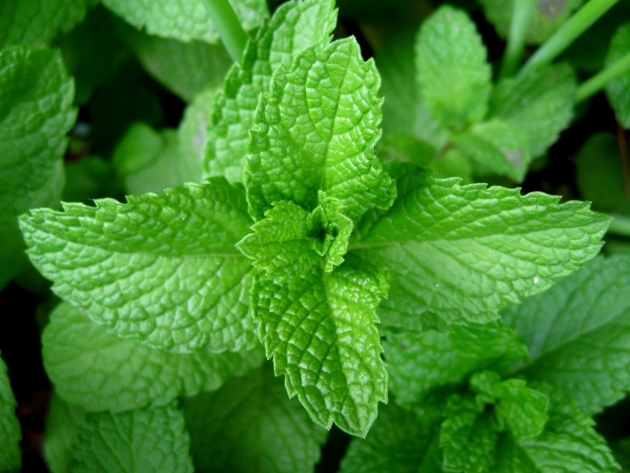
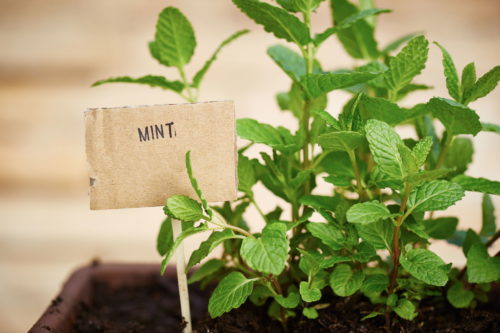
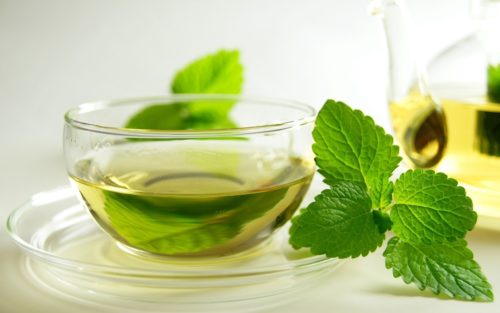

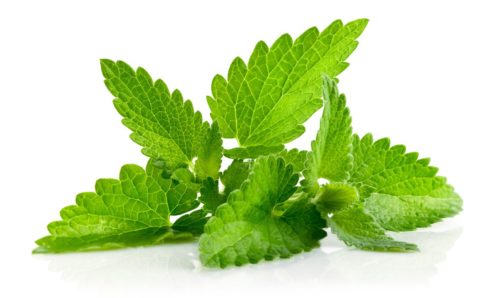

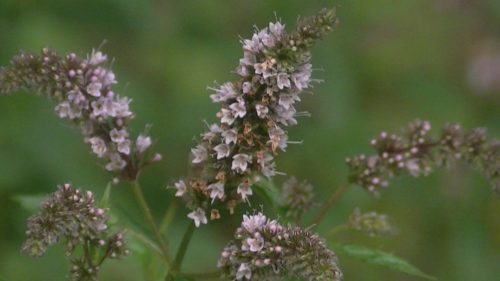
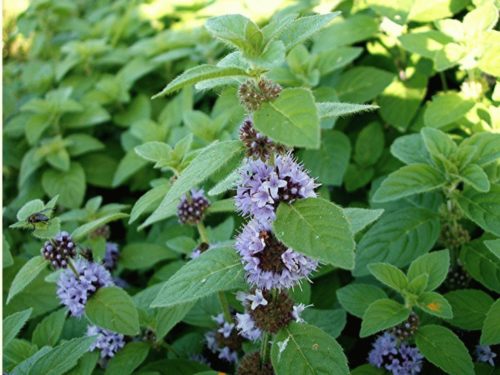
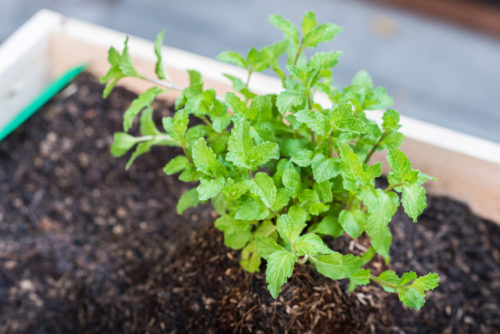
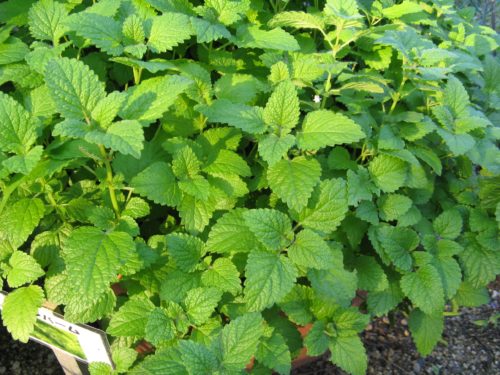
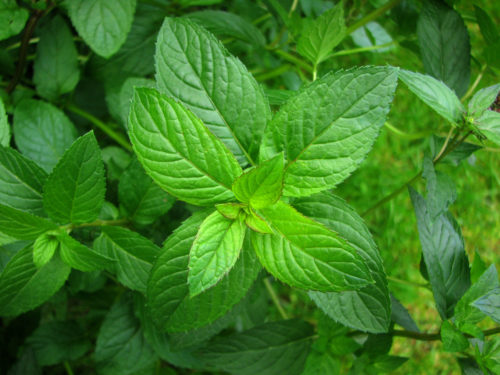












 Start a discussion ...
Start a discussion ...